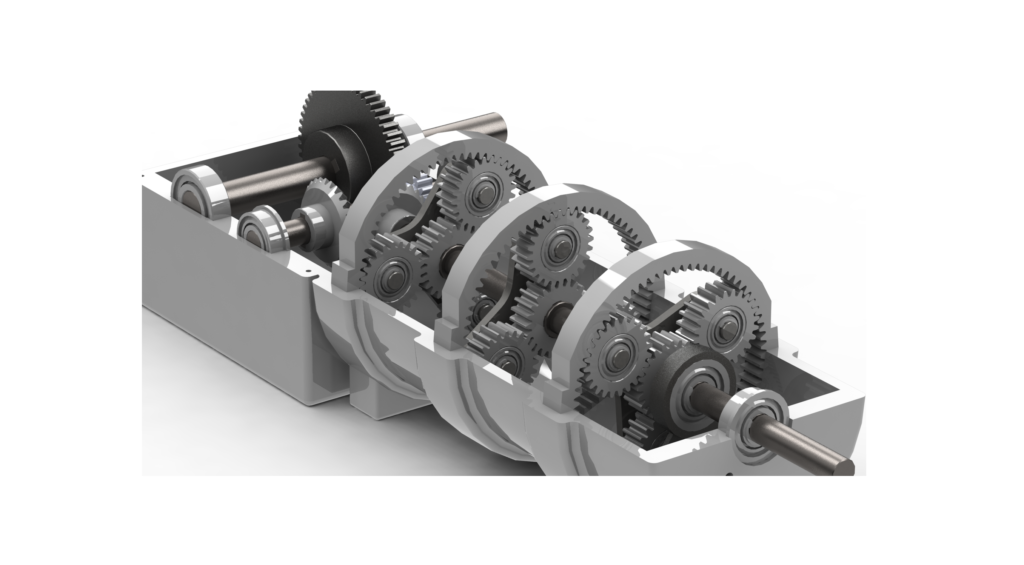A planetary gearbox, also introduced as an epicyclic gearbox, is one of the most interesting forms of device presents within motion control. They are typically employed in automobiles as an essential component of automatic transmission applications. Planetary Gearboxes are a form of the gearbox where the output and input both have the same center of turning. This means that the center of the input gear rotates around the center of the output section, and the output and input shafts are aligned.
Our website provides you with all the useful data you may need about planetary gearboxes so you can make an informed decision. Whenever you have any questions about gearboxes, there’s no better solution than to contact Linquip experts. Take some time to read Linquip’s article entitled, “What Is Gearbox?“.
If you want to use all the features provided by Linquip, you need to register as a Linquip Expert. Would you be up for sharing your insights on Linquip as a guest post? There is a Guest Posting section on the Linquip platform where you can post your content.
What is a Planetary Gearbox?
A planetary gearbox is an instrument with the output and input shafts aligned. A planetary gearbox is employed to transmit the greatest torque in the most compact form (introduced as the torque density).
With its intrinsic cylindrical assembling and in-line shafting, planetary gearing is always provided as the compact alternative to normal pinion-and-gear reducers. Being suited for a broad range of usages –from bulldozer power trains to electric screwdrivers– these sets are heavy contenders when weight and space versus torque and reduction are chief concerns. We require details to understand their function fully. Examining the mechanics and construction of a planetary gearbox reveals some of the less-obvious features that come into play.
The bicycle’s acceleration hub is a basic instance of the planet-wheel system; Have you ever wondered how you can obtain so many capabilities and power in such a little hub? For a three-speed hub, a one-stand planetary gearbox is utilized, and a two-stand for a five-speed hub. Each planet gear set has a reduction situation, an acceleration mode, and a direct coupling.
In mathematical discussion, the lowest reduction rate is 3:1, and the greatest is 10:1. The sun gear becomes too large against the planet gears at a ratio of less than 3. The sun wheel becomes too low, and the torque will reduce at a ratio of more than 10. The ratios are typically absolute i.e. an integer value. Whoever invented the planetary gearbox is not famous, but it was explained by Leonardo da Vinci in 1490 and has been employed for centuries.
Why is it Named a Planetary Gearbox?
The planetary gearbox got its term because of how the various gears move in a set together. We see a satellite (ring) gear, a sun (solar) gear, and two or more planet gears in a planetary gearbox. The sun-gear is normally run and thus moves the planet gears bolted in the planet carrier and form the output shaft. The satellite gears have a constant location about the outside components. This looks like our planetary solar arrangement, and that is where the term comes from. What helped was that ancient gear structures were employed widely in astrology for mapping and following the celestial bodies. So, it was not such an important step to make.
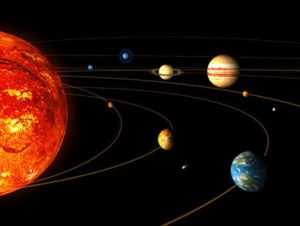
We always speak practically from the perspective of the employment of planetary gearboxes for industrial applications. That is why we name the sun gear, the input shaft, the planet gears, the carrier, the output shaft, and the satellite part (or ring component) the housing.
How Does a Planetary Gearbox Work?
One type of gearbox meets all the modeling concepts of servo applications once presenting comparatively long performing life with low maintenance needs — the Planetary Gearbox. That’s because planetary gearboxes provide great torque transmission with suitable stiffness and little noise in a footprint that’s more compact than that of other device forms.
The arrangement of the gears can be compared to our Milky Way, where the planets turn around the sun, hence the name “Planetary Gearbox”.
As discussed before, there is a “sun” gear in the middle of the planetary gearbox –also introduced as a central gear. This is always the input part. Around the outside, there are two or more “planet” components – or outer gears. Surrounding the planet parts, there is a ring component that combines the formation. The planet gears are joined by a carrier which in turn is attached to the output shaft.
The design of the planetary gearbox is relatively simple, including a central sun gear, an outer ring (also known as an internal gear since its tooth face inward), a carrier, and the planetary gears. Input power to the sun gear results in spinning. The mesh of planetary gears with the sun gear has a standard, and as the sun gear rotates based on this, so the planetary gears turn according to their axes.
The planetary gears are also proportional to the ring part, which is fixed, causing the planetary parts to rotate around the sun gear. The carrier keeps the planetary gears in their basic form and sets their gaps. It turns with the planetary parts and incorporates the output shaft.
Planetary Gears: Principles of Operation
Planetary gears are at the core of novel engineering and are employed in gearboxes that energize everything from basic plant devices to cutting-edge electric systems. The simple arrangement of a central drive and turning gears was presented thousands of years ago to design the movements of the planets. Today, designers use planetary gears in cases that require high torque density, functional efficiency, and durability. We discuss the principles of operation, how planetary gears perform, and where you might find them.
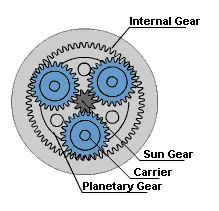
In a planetary gearbox, many teeth operate simultaneously, which provides a high-speed reduction to be obtained with comparatively small gears and lower inertia reflected in the system. Having several teeth share the load also permits planetary parts to transfer high levels of torque. The combination of large speed reduction, compact size, and high torque transmission make planetary gearboxes a common option for space-constrained usages.
What is a Planetary Gear Set?
A simple planetary gear set is constructed of three basic parts:
- The sun gear is located in the center (central part)
- Several planet gears
- The ring gear (outer component)
The three parts devise a stage across a planetary gearbox. We can offer double or triple stages for greater ratios. Planetary gearboxes can be energized by either hydraulic motors, electric motors, or diesel or petrol combustion engines. Click here to know them more precisely.
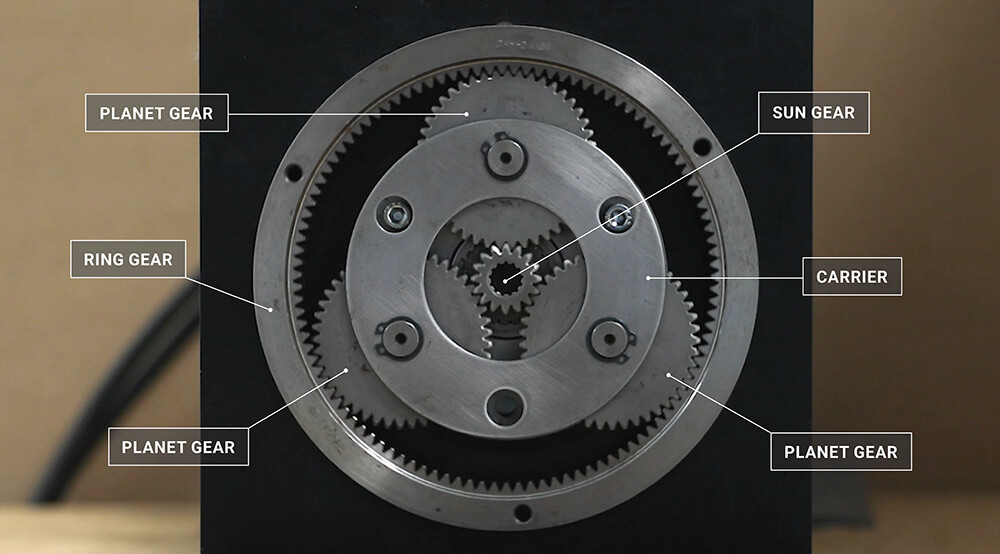
The load from the sun gear is applied to multiple planetary parts, which can either be employed to run an outer ring or a spindle or shaft. The central sun gear takes a low-torque, high-speed input. It can run many turning external gears which improves the torque.
The basic model is a highly efficient and effective method of transmitting energy from a motor to an output. Approximately 97% of the power input is provided as an output.
Types of Planetary Gearbox
Three main types of planetary gearboxes are available based on their performance, including a wheel drive, shaft output, and spindle output. Here’s what they are and how they perform.
Wheel Drive
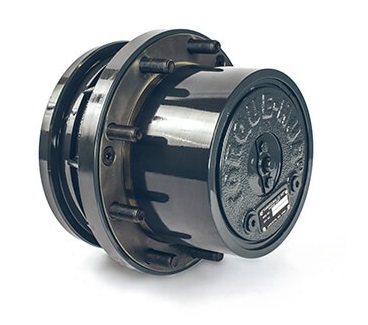
The sun gear runs the surrounding planetary parts which are attached to a carrier in a wheel-drive planetary gearbox. When the sun gear is performed, the planet gears circulate the outer ring gear. The wheels can be combined over the housing of the system. By connecting the wheel straight to the gearbox, the size of the system can be optimized. Wheel drive planetary gearbox can be used in cases up to 332,000 N.m torque.
Shaft Output
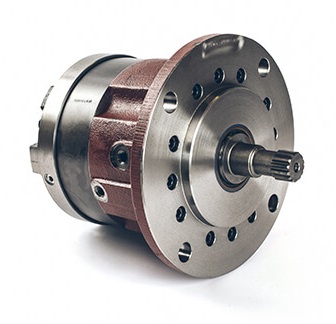
The sun gear runs the surrounding planetary parts, which are housed in a turning carrier in a shaft drive gearbox. The ring part is maintained fixed with the turning carrier delivering drive to the shaft. The housing part of the system is fixed straight to the machine, with the output being a turning shaft. The range of a shaft output gearbox can deliver up to 113,000 N.m output.
Spindle Output
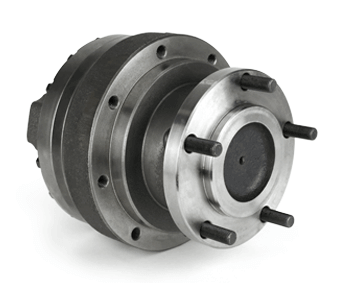
Spindle output planetary gearboxes perform in the identical method as shaft outputs, although the output is provided as a flange. The spindle drives planetary types can be used in applications with up to 113,000 N.m torque.
What is Planetary Gearbox Used for?
A planetary gearbox can be used for different purposes. We offer planetary gear sets to employ in industrial and mobile cases, including:
- In a robot, to improve the torque.
- In a printing press to decrease the speed of the rollers
- For precise positioning
- In a packaging machine for reproducible products
- Wheel drives
- Track drives
- Conveyors
- Slew drives
- Hoist drives
- Mixing
- Winch drives
- Pumps
- Coil tubing injectors
- Auger & drilling drives
- Cutter head drives
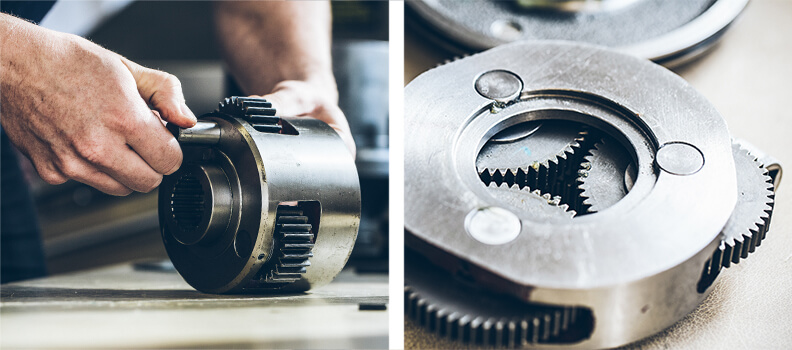
Planetary gear sets can be employed in stages, which provide a variety of transmission rate options that can meet our requirements.
Read more about AssunMotor’s small planetary gearbox.
Choosing a Planetary Gearbox
When choosing a planetary gearbox for the special application, it is important to take note of the following.
- Features required: torque, backlash, ratio, etc. of the case should be taken into consideration.
- Environment: some environments may leave a device exposed to dust, dirt, or moisture; so, it is essential to consider this property and choose a planetary gearbox with the correct protection.
- Space: planetary gearboxes are present in different sizes; if there is a limited place available, then a smaller planetary gearbox can be employed.
Possibilities of Planetary Gearboxes
It is possible to identify different velocities and rotating directions with the same structure. This can be obtained by, for example reversing the gearbox, which provides the following possibilities:
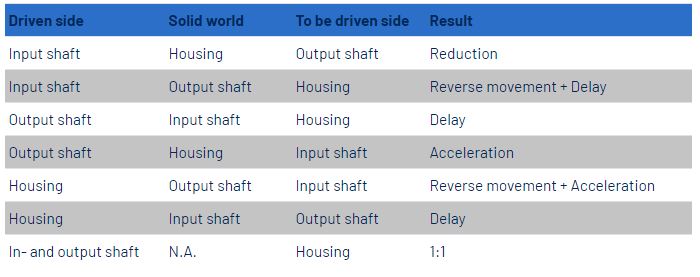
Buying A Planetary Gearbox: What Should You Pay Attention To
What are the purchase issues for a planetary gearbox? That is problematic to answer this question since it is mostly dependent on where the gearbox is employed precisely. First of all, the primary features (e.g. backlash, torque, and ratio) should be correct, but then the secondary (e.g.: noise level, corrosion resistance, and construction) and the tertiary (e.g. price, delivery time, service, and global availability) are important.
Since some constructors run faster, you can contact them for all your questions. They will reply immediately, always the same day, with a customized response and/or complete offer. With this method, you never have to worry about a delay since they deliver every planetary gearbox out of stock and quicker than anyone else.
Grease or Oil as Lubricant in Planetary Gearbox
Even with how accurately the planetary gearbox is constructed and assembled, there are often rolling or sliding sections inside. That’s why each planetary gearbox includes a lubricant – whether it’s grease, oil, or a synthetic gel – to guarantee that the gears perform well and prevent wear.
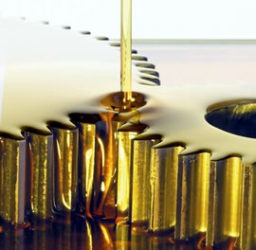
Besides, the lubricant always presents cooling and decreases the noise or vibration. Some constructors use a special lubricant from the company Nye Lubricants to improve their quality; in fact, it is a form of gel.
Arguments for A Planetary Gearbox in Combination with A Servo Motor
The main advantage of using a planetary gearbox in combination with a servo motor is that the torque is separated over 3 gears (the planet parts), and therefore – at the same dimensions – the torque is almost 3-fold than a “typical” gearbox. Other arguments are:
- Compact and therefore low mass inertia.
- Low backlash
- High efficiency
- Closed system
- Absolute ratios between 3:1 and 10:1 per stage
What are the Drawbacks of Using a Planetary Gearbox?
A planetary gearbox has some drawbacks and disadvantages. Their complexity in modeling and production tends to make them a more expensive method than other gearbox forms. And precision construction is highly important for these instruments. If one planetary gear is placed closer to the sun gear than the others, some imbalances in the planetary gears can result, leading to increase wear and failure. Also, the compact footprint of planetary gears results in high heat dissipation, so applications that perform at very high velocity or experience continuous performance may require cooling.
Once employing a “normal” (in other words, inline) planetary gearbox, the motor and the driven parts should be in line with each other, although constructors present right-angle models that incorporate other gear sets (always bevel gears with helical teeth) to supply an offset between the output and input.
Consider that a planetary gearbox can be made with either spur gears or helical gears. Spur gears have a zero helix angle; so, they create no axial forces. As a result, the bearings in a spur type of planetary gearboxes only serve to provide the gear shafts.
Helical types, in contrast, include a helix angle between 10 and 30 degrees, which results in considerable axial force generation. The bearings employed in a helical form of planetary gearboxes should tolerate these axial forces. (Larger helix angles cause greater axial forces but also present higher torque potential, smoother operation, and less noise.)
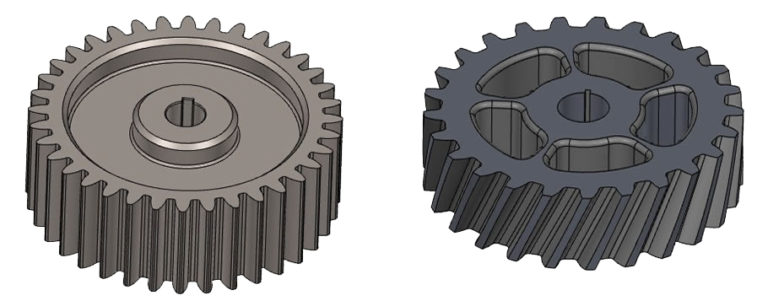
In addition, in a planetary gearbox — whether it is a helical design or a spur type — the bearings play an essential role in the torque transmission aspect. But the planetary configuration affords a limited gap across the gearbox to incorporate the bearings. Needle bearings are an appropriate option from the size aspect but are not constructed to tolerate significant axial forces. Tapered roller bearings are more desirable for high axial forces but are typically larger than needle bearings.
The basic limitations on bearing type and size, joined with the dual task of supporting axial loads and transmitting torque, mean the torque levels of a helical planetary gearbox can be smaller than those of similar gearboxes employing spur gears, whose bearings only tolerate some forces because of the torque transmission (no axial forces).
On the other hand, helical planetary models have a smoother operation, lower noise, and higher stiffness than spur planetary types. These properties make helical planetary gearboxes the more usual option in servo applications.
What Options Do We Have?
The planetary gearboxes are presented in 1-speed and 2-speed options. Professional manufacturers can supply single, double, or triple sets to suit any case. They can also incorporate dynamic, hydraulic, and electromagnetic braking within the range of planetary gearboxes.
How Do We Know What Planetary Gearbox We Need?
Once choosing a planetary gearbox, its gearing ratio and size should be defined by the outcome. It’s an important balance between efficiency, size, cost, and performance. Famous constructors have a consultative approach to modeling. They begin each project by developing deep learning of the certain case, the torque, speeds, and performance of the machine.
They also use their insight and experience to determine and provide a suitable planetary gearbox method that’s reliable and cost-effective. Every gearbox they provide will deliver years of trouble-free operation. It’s the combination of ongoing innovation and engineering excellence that holds them at the forefront of planetary gearbox technology.
Download What is Planetary Gearbox PDF
The following link contains the content of this article for you in a PDF format that you can refer to whenever you like.
Buy Equipment or Ask for a Service
By using Linquip RFQ Service, you can expect to receive quotations from various suppliers across multiple industries and regions.
Click Here to Request a Quotation From Suppliers and Service Providers
Read More In Linquip
- What is a Reduction Gearbox?
- What is a Helical Gearbox?
- What is a Worm Gearbox?
- Types of Bevel Gears
- The Ultimate Guide to the Types of Gearbox
- Industrial Gearbox A Comprehensive Review on Features, Types, and its Usability
- Gearbox Components and Parts: Everything You Need to Know
- The Difference Between Gearbox and Transmission
- The Stages of Reverse Engineering an Industrial Gearbox
- Top 10 Gear Manufacturers and Suppliers in the USA in 2022

